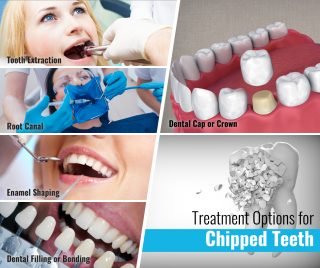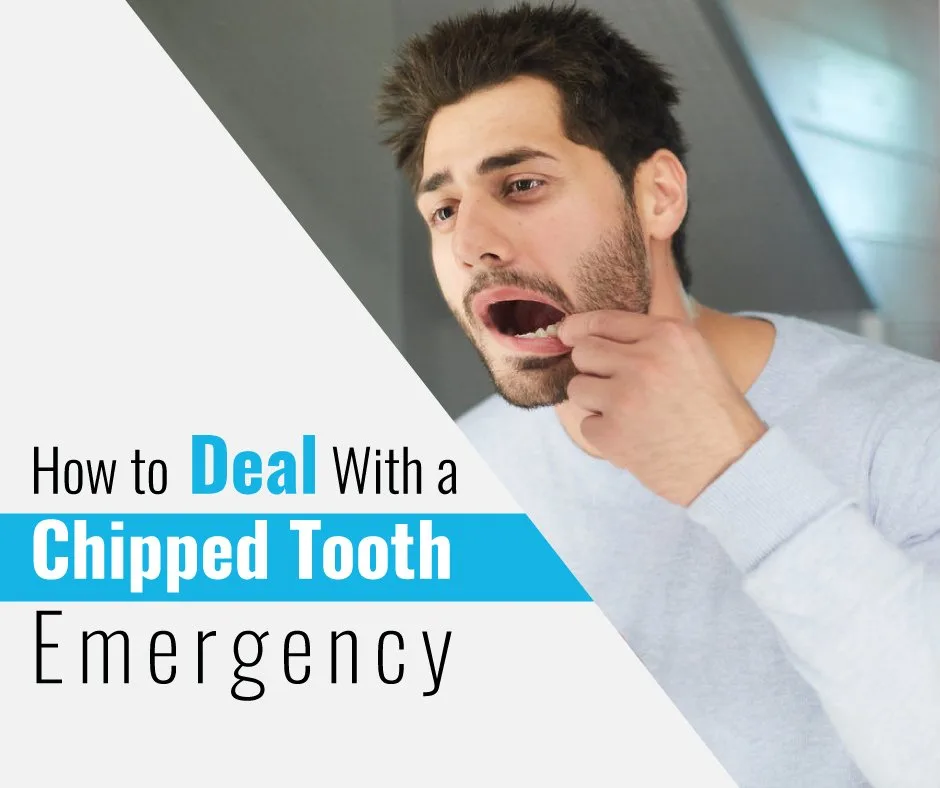How Does a Chipped Tooth Happen?
The enamel covering your teeth is supposed to be the most mineralized and hardest tissue in the body. However, its strength also has limits. Myriad things can damage it such as receiving a blow to the face, falling, biting down hard, or hitting something hard on the mouth. Chances of chipping/breaking your teeth are more when there’s some pre-existing decay.
However, in the event that you chip or break your teeth, you can follow a lot of corrective measures. Instead of panicking, follow the instructions in this post.
What to do in case of a chipped/broken tooth emergency?
Rinse Out Your Mouth
This should be the first course of action. Use warm water to thoroughly rinse the mouth. The idea is to clean the damaged area and avoid any blood or dirt from building up. Rinsing will help any broken pieces of the tooth come out. This is essential, so you don’t accidentally bite down on it and hurt your gum. Rinsing also ensures that you don’t accidentally swallow any remaining pieces of tooth. 
Stop the Bleeding
In case of bleeding, use a clean gauze or towel to apply pressure to the affected area. This will not only help to stop the bleeding but will also avoid the risk of accidentally swallowing blood. Make sure not to irritate or scrub the affected area to avoid bleeding and pain. Hold steady pressure on the affected area with minimal movement.
In case of excessive bleeding, call 9-1-1 or visit your emergency dentist immediately. Some injuries can be more than just a broken tooth; especially if it was caused by trauma to the head. If you experience dizziness, you might need intense medical assistance.
Preserve the Tooth if Possible
In case the entire tooth has separated from the mouth, try to locate it as soon as possible. If you can preserve the entire tooth, there’s a good chance that your dentist might replace it. Give the tooth a quick rinse by putting it either in saline solution or milk. If you have neither, just use clean water. Try to reach your dentist as soon as possible once you have preserved the tooth.
If a part of the tooth is still attached to the socket, it’s best if you leave it inside. Do not try to pull it yourself, or you may increase the risk of infection and heavy bleeding.
Apply Cold Compresses

Jacob Lund/Shutterstock
Applying cold compresses can reduce swelling and also help to alleviate pain. Cold tends to constrict the blood vessels and restrict the blood flow to the mouth. Applying a cold compress can reduce inflammation, stop the bleeding, and numb the area, so you don’t feel as much pain. If you don’t have a cold compress you can use a ziplock bag and fill it with ice. Wrap it in a towel and apply.
Take a Pain Reliever
You can take over-the-counter pain medications if you are in a lot of pain. This will ease the discomfort while you’re on the way to the dentist. NSAIDs are anti-inflammatory pills that can reduce inflammation and pain. iBuprofen, naproxen, and aspirin are all common pain-relieving medications easily available.
Visit Your Dentist ASAP
It’s paramount that you seek expert help without any delays; especially if there’s a child involved, you must visit your pediatric dental clinic asap. Even if the pain is low, it doesn’t mean that everything is fine. Leaving your chipped/broken tooth unattended could lead to severe infections or unexpected dental problems in the future. If you can reach your dentist quickly there’s a good chance that he/she could salvage the tooth and restore it back into the socket.
Ideally, you should call the dentist as soon as the emergency hits so he/she is aware of the problem and is better prepared to help you when you reach it. Do not forget to bring the preserved tooth with you soaked in milk/water/saline solution.
Treatment Options for Broken/Chipped Teeth
There are many treatment options available for treating a chipped or broken tooth. It all depends on the severity of the situation and how much damage has occurred.
Below are a few options a dentist is likely to explore in the face of one such emergency. 
- Dental Fillings – Also known as a tooth filling, this treatment option is ideal when only a tiny piece of the tooth is damaged/broken. Dentists use a composite resin for filling the hole which becomes hardened upon application to protect the tooth.
- Dental Crown – Dental fillings don’t work when a large piece of tooth has broken off. In the absence of enough areas to be filled, dental crowns are the next best option available. A dental crown acts as a cap for covering and protecting the exposed/sensitive nerves.
- Tooth Extraction – Sometimes tooth extraction is the only viable treatment. Your dentist will use this one if the damaged tooth has embedded deep into the surface. Although dentists try their best to salvage damaged teeth, in some cases leaving the tooth in can do more harm than good. Since extracting your tooth is not an easy decision, you would need to work with your dentist to explore your options.
- Enamel Shaping – Enamel shaping is a slightly less common procedure that dentists use for reshaping and polishing oversized, uneven, and rough teeth edges. This option is best if the damage is only a little.
Final Thoughts
Dental emergencies can be painful and difficult to deal with. That’s why educating yourself about how to deal with such situations is crucial. When you’re prepared, you can minimize the damage and also safeguard your oral health.





![women [longevity live]](https://longevitylive.com/wp-content/uploads/2020/01/photo-of-women-walking-down-the-street-1116984-100x100.jpg)










